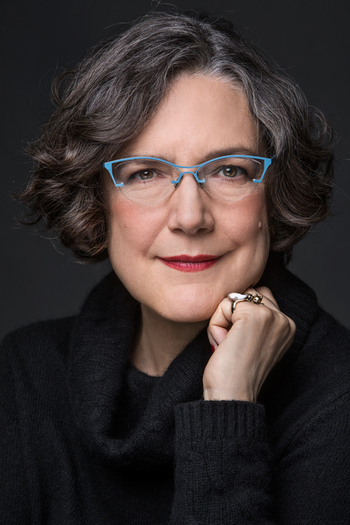
Ingrid D. Rowland, a professor in Notre Dame’s Department of History and School of Architecture, is one of three winners of the inaugural Grace Dudley Prize for Arts Writing.
The award was among the Silvers-Dudley Prizes — named after the late Robert B. Silvers and his partner, the late Lady Grace Dudley — given to nine writers, including The New Yorker’s theatre critic, The New York Times’ critic at large, and journalists from Mexico, Germany, and Sudan.
“It means the world to me to have won, to my immense surprise, this recognition,” Rowland said.
The awards honored excellence in arts writing, criticism, and journalism — three genres Silvers championed as founding editor of The New York Review of Books from 1963 to 2017. Rowland’s honor recognizes “extraordinary career-long achievement writing at the highest possible level on, in particular, Italian Renaissance art and culture, with such power, penetration, grace, and style,” according to the Robert B. Silvers Foundation.
“The people who picked me for this prize, named after Grace, may have seen the prickliness of her in the prickliness of me,” she said, with a laugh.
For years, while teaching Notre Dame students on two continents about topics ranging from classical architecture to the Salem witch trials, Rowland has authored books and penned critiques for literary magazines at a prolific pace.
“Teaching, like writing, is a creative art. Students are so filled with ideas and often unburdened by preconceptions. They see freshly and open my eyes over and over.”
Silvers, who received the 2013 National Humanities Medal from President Barack Obama, embraced Rowland’s writing style — so much so that after reading a 1994 piece she wrote about a Paris exhibition in The Burlington Magazine, he FedExed a package to her Chicago home. Inside was a copy of The Currency of Fame: Portrait Medals of the Renaissance and a note inviting her to critique it in The New York Review of Books.
A follow-up lunch at Silvers’ go-to vegetarian restaurant in New York launched a 27-year friendship and work collaboration.
“As an editor, he was absolutely relentless,” said Rowland, who is also a faculty fellow of the Nanovic Institute for European Studies. “The first piece I sent, he took out half of my adjectives. I developed an ‘inner Bob,’ and he did much less editing then.”
Rowland remembered Silvers in a gorgeous reflection after his death in 2017, in which she compared his editing prowess to an orchestra conductor and theatrical director. She credited his friendship, assignments, and funding with contributing to her “charmed life” that has included flying to London to see shows and meeting enthralling acquaintances.
“It was a great way to see the world,” said Rowland, who has shared her experiences in more than 100 articles and reviews in the literary-intellectual magazine.
In addition, Rowland has authored 14 books and has three currently under contract. Her 2008 book Giordano Bruno, Philosopher/Heretic won the American Historical Association’s Howard R. Marraro Prize for best book on Italian history, Italian cultural history, or Italo-American cultural relations. She’s also written plays and published translations of correspondence in a Vatican Library manuscript.
Rowland has been writing since before she could write. Her first creation — “The Tree, the Swing, and The Ladder” — was in hieroglyphics. Staples held together the pages, which were scraps of paper she got from the lab of her Nobel laureate scientist father.
At Pomona College, Rowland wrote so much for the student paper that she was made managing editor. While earning her master’s and doctorate in Greek literature and classical archeology at Bryn Mawr College, she wrote two novels — but considered them so horrible she burned them outside her dormitory.
Now, she begins writing in her head as she knits and does needlepoint — the time when her best ideas “settle.”
She’s currently immersed in crafting two murder mysteries. In one, set in the 1600s during the Dutch Tulip Crisis and Thirty Years' War, a detective is elected pope. In the other, set in present-day, the Archbishop of Canterbury is found dead in his dish of spaghetti before an ecumenical council.
The Silvers-Dudley Prize is the latest in a long string of honors for Rowland. Accolades include a National Endowment for the Humanities fellowship, election into the prestigious American Academy of Arts and Sciences, and the Quantrell Award for Excellence in Undergraduate Teaching.
In 2019, she was highlighted in Notre Dame’s Women Lead series celebrating women whose scholarship and leadership leave an indelible imprint on the global community. Rowland strives to lead by example, including through her endless pursuit of knowledge. This spring, she’s auditing a watercolor class taught by Fr. Martin Lam Nguyen in the Department of Art, Art History & Design.
Three of every four semesters, Rowland is based at Notre Dame's Rome Global Gateway. The fourth, including this spring, she’s in South Bend and is teaching courses on the Manhattan Project and Renaissance Rome.
“Teaching, like writing, is a creative art,” she said. “Students are so filled with ideas and often unburdened by preconceptions. They see freshly and open my eyes over and over.”
Originally published by at al.nd.edu on February 01, 2022.